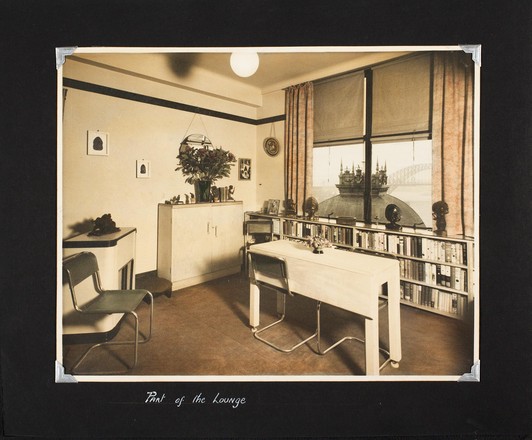HOUSING.
NEW CITY BUILDING.
Co-operative Homes.
INTERESTING EXPERIMENT.
In the presence of a large and representative
gathering, including several of his colleagues in the Ministry, the Premier,
Sir George Fuller, yesterday afternoon formally opened "The Astor,"
In Macquarie-street.
It is claimed to be the highest reinforced
concrete building in Australia, and it embodies a novel and interesting
experiment in co-operative housing.
The opening ceremony took place on the
roof garden, commanding a magnificent view of the harbour, the Botanic Gardens,
and the city. The statement that the roof is on a level with Killara affords an
idea of the towering height of the building, which has been erected in
Renaissance style, and comprises 13 floors and a basement, with four homes on
each floor. Bridges on each floor communicate with the different homes, and are
decorated on each side with flowers.
The owners of the homes are their own landlords.
The central Idea of the scheme, which was initiated by Mr. John O'Brien, who
formerly owned the site on which the building stands, is that each occupier
purchases his home, taking up shares in a co-operative company for the amount
involved, ranging from £2700 to £4000. The only extra charge, it is stated,
will be a sum, estimated at not more than £2 per week, for rates, taxes, lifts,
cleaning, upkeep, and other common services. The shareholders – i.e., the
owners of the homes – elect a board of directors to control the building.
Already 36 homes out of the total of 52 have been purchased. The building,
which was designed by Messrs. Esplin and Mould, architects, and built by
Concrete Constructions, Limited, and which contains several labour saving
devices, is the largest reinforced concrete building in Australia, and weighs
about 12,000 tons, 4500 cubic yards of concrete and 400 tons of steel having
been used in its construction. Most of the joinery work is of Queensland maple,
and the whole of the materials, except the glass, have been manufactured in
Australia. Automatic fire alarms have been installed in each home,
communicating direct with the fire station. The company claims that the
building is the most up to date in Australia. Owners of the homes have the
right to lease or sell them, subject to approval. This will not be arbitrarily
withheld, but it has been regarded as vital to the success of the scheme that
reasonable control should be exercised over persons who are to comprise the
co-operative community.
Mr. John O'Brien, chairman of directors of
the company, who presided at the opening ceremony, said that he had conceived the
Idea with the object of a number of people cooperating to build themselves
modern homes, free from landlordism, objectionable neighbours, and other
flat-life troubles. Mr. O'Brien suggested that the idea of co-operative housing
might be adapted to less costly homes to the advantage of working men and their
families.
Mr. A. C. Lewis, of Concrete
Constructions, Limited, contractors for the building, in speaking of the
application of concrete not only to buildings, but also to other modern uses,
said that up to 80 per cent of the roads in the United States were being
constructed of concrete.
Mr. Donald Esplin, of Messrs. Esplin and
Mould, said the fact that there had not been a single accident throughout the
course of construction was worthy of note when they viewed the massive
structure and considered the work entailed. (Applause.)
The Premier, Sir George Fuller, in
declaring the building open, created laughter by observing that the big
gathering that afternoon on the roof garden was closer to heaven probably than
it had ever been before. He went on to say that concrete buildings, of which
that structure was such a magnificent example, and concrete roads were a
feature of American life, and he hoped that financial opportunities would
present themselves in this State for the development of the State, and more
especially the country districts, with the aid of such roads. (Applause.) No
system ought to be more strongly advocated and more closely followed than that
of co-operation, of which, again, this building was a bold example. (Applause.)
Co-operation had done much for the development of the rural industry. The
Community and Rural Settlement Bill, which they were introducing that day,
would, it was hoped, give a big impetus to co-operative movements for the prosperity
alike of the people concerned and the State. A statement attributed to the Lord
Mayor recently showed that during the last 12 months the rate of building had
been double that of any previous year in Sydney. There were in the community
"croakers" who were afraid of their own shadows, as far as the
development of this State and of Australia was concerned; but if we were to
make our country what it ought to be we required courage, not timidity, and
people who had strong faith and confidence in the future of the country.
(Applause.) The magnificent building which he had opened that day stood
as a striking example of that confidence, which was a material factor in the
greatness of a country. (Applause.)
A vote of thanks to the Premier was proposed
by Mr. Wilfrid E. Johnson. Afternoon tea was served on the roof garden.



 Back to list
Back to list